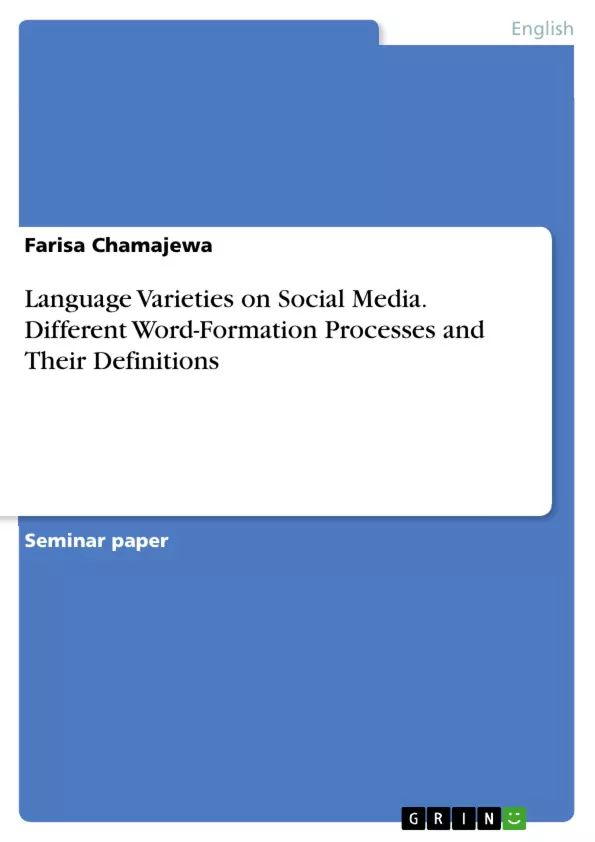The following paper aims to analyze the language that is used on social media. With word-formation processes as an umbrella term, the linguistic features which are part of digital communication will be listed. The first chapter will introduce the term social media and English as the lingua franca of digital communication. The next chapters will discuss the focus of the paper namely different word-formation processes and their definitions. With the help of secondary sources, each chapter will provide examples of daily written English on social networks. The paper concludes with a final summary and thoughts on the subject. This research paper discusses the different language varieties of social media with a deeper focus on word-formation processes.
Living in the digital era, the way people comminate has changed during the last decades. Traditional communicating patterns developed in a way that allows people to stay in their homes and make use of their technical devices to connect with others. Writing letters and going out to meet partners is outdated nowadays. As English is the lingua franca of the Internet in general it is also used in social media by most of the users. Long-distance relationships with one partner being an English-speaking country and the other one in a non-anglophone country also add to the fact that they communicate in English. The main question is how social media has changed the way people communicate in anglophone countries. It is very important to observe this topic because English is known as a language that changes constantly. Especially in social media, there are varieties of English that are used to communicate in the chat room or the comment section.
Inhaltsverzeichnis (Table of Contents)
- Introduction.
- English as a lingua Franca on social media
- Social media categories..
- the use of language in social media
- Abbreviation
- Borrowing
- Clipping..
- Blending
- Blending with overlapping
- Blending with the first splinter clipped.
- Blending with the second splinter clipped..
- Compounding.
- Conclusion...........
- References
Zielsetzung und Themenschwerpunkte (Objectives and Key Themes)
This seminar paper examines the linguistic features of English used on social media, focusing on word-formation processes. The paper aims to analyze how social media has influenced communication in English-speaking countries, and how these changes are reflected in the language itself.
- The role of English as a lingua franca in social media
- Different categories of social media platforms and their impact on communication
- Word-formation processes common in social media English
- Examples of word-formation processes in everyday written English on social networks
- The evolution of English in the digital era
Zusammenfassung der Kapitel (Chapter Summaries)
- Introduction: This chapter introduces the topic of language varieties on social media and establishes the importance of understanding the evolution of English in the digital era. The paper's objectives and scope are outlined.
- English as a lingua Franca on social media: This chapter discusses the historical development of English as a global lingua franca, emphasizing its dominance in the online world. The chapter also highlights how social media has contributed to the spread and evolution of English, particularly in its orthographic representation.
- Social media categories: This chapter explores the different categories of social media platforms, emphasizing their impact on language use. The Communications category, encompassing networks like Facebook, Instagram, and Twitter, is highlighted as having the most significant influence on language evolution.
Schlüsselwörter (Keywords)
This seminar paper focuses on the keywords of social media, language varieties, word-formation processes, lingua franca, and digital communication. The paper examines how these concepts intersect and influence the evolution of English in the online environment.
- Quote paper
- Farisa Chamajewa (Author), 2021, Language Varieties on Social Media. Different Word-Formation Processes and Their Definitions, Munich, GRIN Verlag, https://www.grin.com/document/1060209



